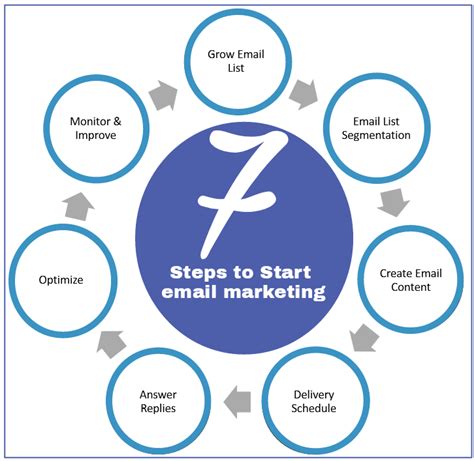

How to Start an Email Marketing Business in 7 Steps
Starting an email marketing business can be a lucrative and rewarding endeavor. With the rapid growth of digital marketing and the increasing importance of email in customer engagement, there’s a significant opportunity to tap into this thriving industry. Here’s a comprehensive guide to help you launch your own email marketing business:

Step 1: Define Your Target Audience and Niche
The first step is to identify your target audience and niche. Who are you trying to reach, and what specific needs do they have? Research different industries, demographics, and pain points to find a niche where you can offer valuable solutions.
Step 2: Choose an Email Marketing Platform
Next, you’ll need to select an email marketing platform. This is the software you’ll use to create, send, and track your email campaigns. Consider factors such as features, pricing, ease of use, and scalability. Some popular platforms include MailChimp, Constant Contact, and ActiveCampaign.
Step 3: Build Your Email List
Your email list is the foundation of your business. It’s essential to grow a targeted and engaged list of subscribers who are interested in what you have to offer. Use a variety of methods to capture email addresses, such as:
– Lead magnets (e.g., free guides, webinars)
– Content marketing (e.g., blog posts, videos)
– Social media marketing (e.g., contests, giveaways)
Step 4: Create High-Quality Content
The content of your emails is crucial to the success of your campaigns. Focus on delivering valuable, engaging, and personalized content that resonates with your audience. Use a mix of text, images, and videos to create visually appealing and informative emails.
Step 5: Set Up Automated Email Sequences
Automation is a key component of email marketing. Set up automated email sequences to nurture your subscribers, promote your products or services, and provide valuable information. Use a platform that allows you to trigger emails based on specific actions or events, such as website behavior or purchases.
Step 6: Track and Analyze Your Results
It’s essential to track and analyze your email marketing results to improve your campaigns and optimize your efforts. Use metrics such as open rates, click-through rates, and conversion rates to measure the success of your campaigns. Regularly review your data to identify areas for improvement and adjust your strategy accordingly.
Step 7: Build Partnerships and Collaborations
Partnerships and collaborations can help you grow your reach, generate leads, and enhance your credibility. Collaborate with other businesses, influencers, or non-profit organizations to cross-promote your services and offer valuable content to their audiences.
Tips and Tricks:
- Segment your email list: Divide your subscribers into smaller groups based on their interests, demographics, or behavior to send targeted and personalized emails.
- Use a strong call-to-action: Clearly state what you want your subscribers to do in your emails, whether it’s visiting your website, making a purchase, or signing up for a webinar.
- Personalize your emails: Use personalization tags to include the recipient’s name, location, or other relevant information in your emails to make them more engaging.
- A/B test your campaigns: Test different subject lines, content, and designs to optimize your campaigns and improve results.
- Follow email marketing best practices: Adhere to industry standards, such as CAN-SPAM regulations, to ensure your emails are delivered and well-received.
Common Mistakes to Avoid:
- Buying email lists: Purchased email lists are often filled with invalid or inactive addresses and can damage your reputation.
- Sending too many emails: Overwhelming your subscribers with emails can lead to unsubscribes and damage your brand image.
- Ignoring mobile optimization: Make sure your emails are designed to be responsive and easy to read on mobile devices.
- Not tracking your results: Failing to track your email marketing results can hinder your ability to improve your campaigns and optimize your efforts.
- Lacking a clear strategy: Having a defined target audience, niche, and content strategy is essential for the success of your email marketing business.
Conclusion:
Starting an email marketing business can be a rewarding and profitable venture. By following these steps, choosing the right platform, creating high-quality content, and tracking your results, you can establish a successful business that helps businesses connect with their audiences, drive sales, and build strong relationships. Remember to stay adaptable, experiment with different strategies, and continuously improve your approach to maximize the effectiveness of your email marketing campaigns.










